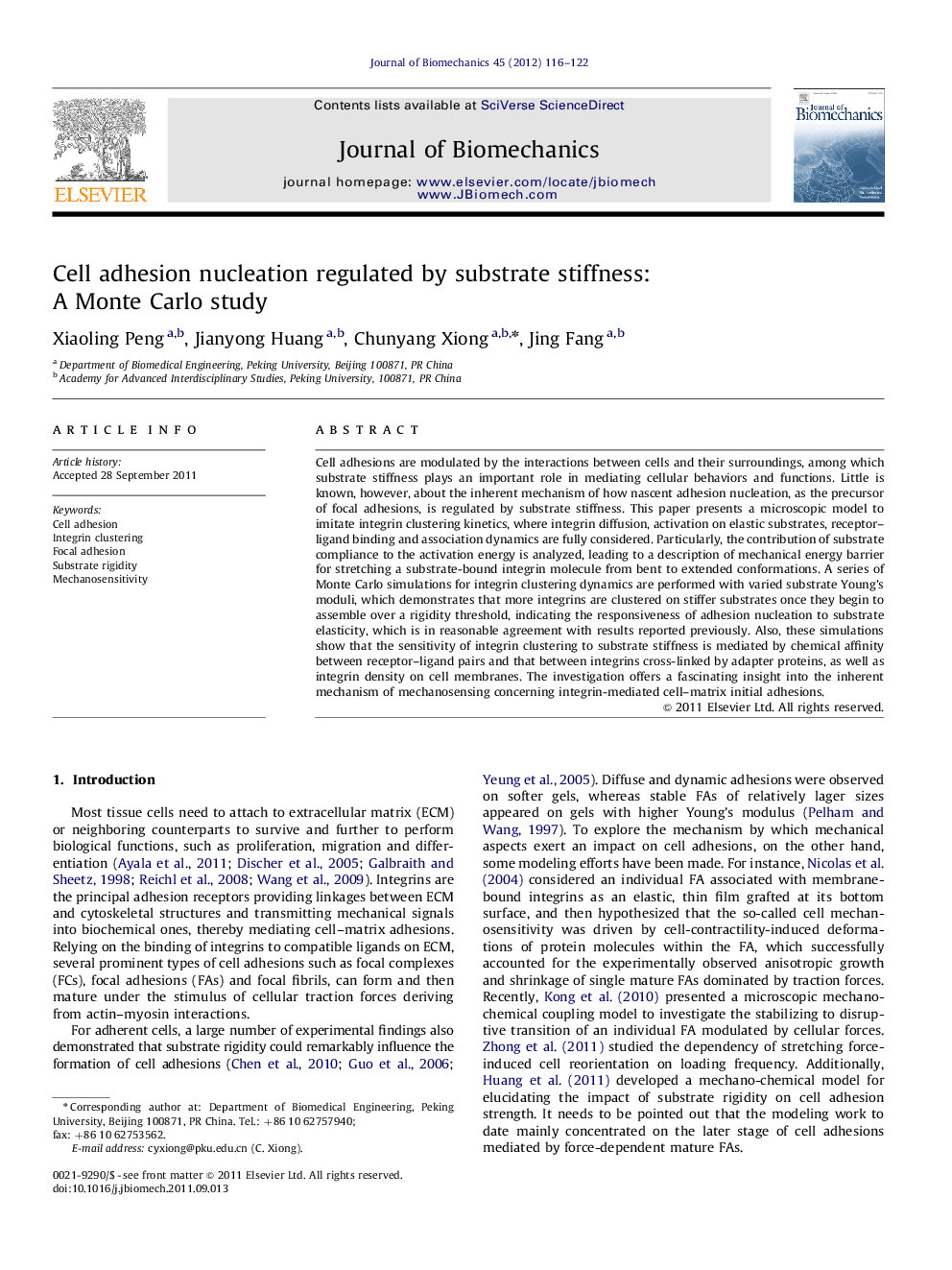| Article ID | Journal | Published Year | Pages | File Type |
|---|---|---|---|---|
| 10432535 | Journal of Biomechanics | 2012 | 7 Pages |
Abstract
Cell adhesions are modulated by the interactions between cells and their surroundings, among which substrate stiffness plays an important role in mediating cellular behaviors and functions. Little is known, however, about the inherent mechanism of how nascent adhesion nucleation, as the precursor of focal adhesions, is regulated by substrate stiffness. This paper presents a microscopic model to imitate integrin clustering kinetics, where integrin diffusion, activation on elastic substrates, receptor-ligand binding and association dynamics are fully considered. Particularly, the contribution of substrate compliance to the activation energy is analyzed, leading to a description of mechanical energy barrier for stretching a substrate-bound integrin molecule from bent to extended conformations. A series of Monte Carlo simulations for integrin clustering dynamics are performed with varied substrate Young's moduli, which demonstrates that more integrins are clustered on stiffer substrates once they begin to assemble over a rigidity threshold, indicating the responsiveness of adhesion nucleation to substrate elasticity, which is in reasonable agreement with results reported previously. Also, these simulations show that the sensitivity of integrin clustering to substrate stiffness is mediated by chemical affinity between receptor-ligand pairs and that between integrins cross-linked by adapter proteins, as well as integrin density on cell membranes. The investigation offers a fascinating insight into the inherent mechanism of mechanosensing concerning integrin-mediated cell-matrix initial adhesions.
Related Topics
Physical Sciences and Engineering
Engineering
Biomedical Engineering
Authors
Xiaoling Peng, Jianyong Huang, Chunyang Xiong, Jing Fang,
